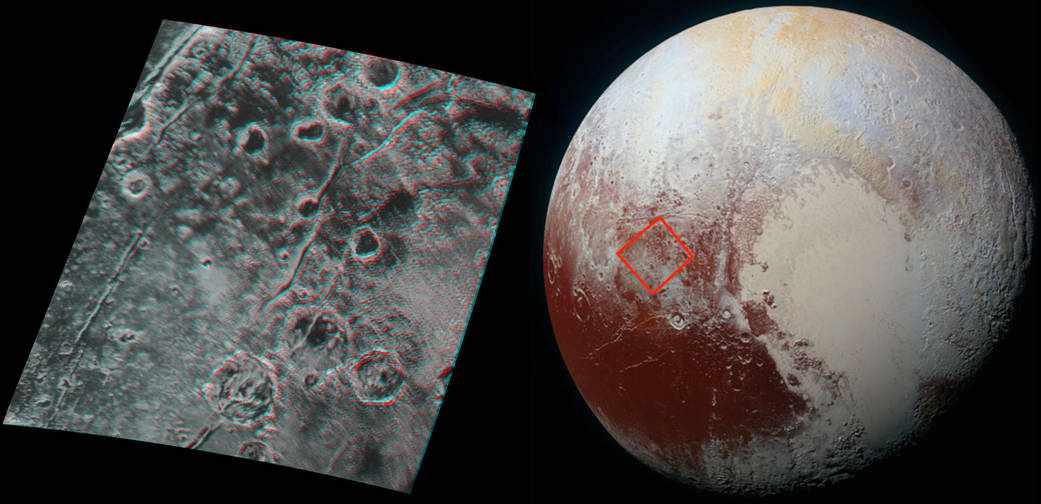Now it is possible to see the surface of Pluto through global stereo map. The pictures are taken from different directions can be downlinked from NASA’s New Horizons spacecraft.
Through stereo pictures, we can actually see an exact topographic map of many Pluto hemisphere, which is offered by New Horizons during the July 14 flyby. This will play a great role in understanding the geological history of Pluto.
To review this example, we need to adopt red/blue stereo glasses, which reveals a 180 miles(300 km) area across, centered near longitude 130 E, latitude 20 N (the red area in the global context picture). The upper left refers to North. This picture reveals an ancient and heavily cratered Pluto, where we can see low hills, deep fractures etc. These all indicates the crust extension of Pluto.
After analyzing these 3-D pictures, we find the following phenomenon:
The steep fracture in the upper left of the picture is about 1 mile (1.6 km) deep; The craters in the lower right part of the image are up to 1.3 miles (2.1 km) deep;The smallest visible details are about 0.4 miles (0.6 kilometers) across.






